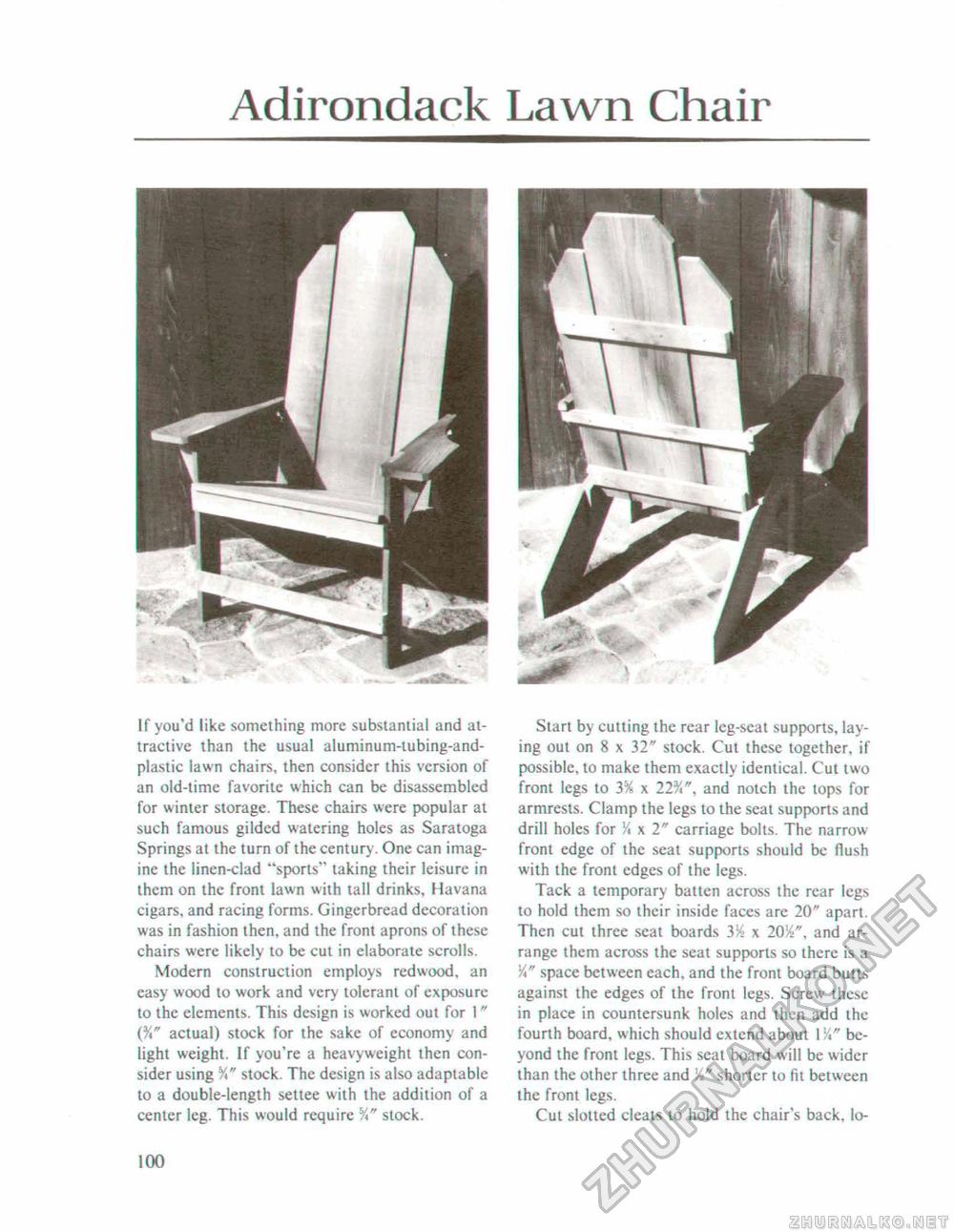Woodworker's Journal 101-Projects-for-Woodworkers, страница 107
Adirondack Lawn ChairStart by cutting the rear leg-seat supports, laying out on 8 x 32" stock. Cut these together, if possible, to make them exactly identical. Cut two front legs to 3% x 22%", and notch the tops for armrests. Clamp the legs to the seat supports and drill holes for Yt x 2" carriage bolts. The narrow front edge of the scat supports should be flush with the front edges of the legs. Tack a temporary batten across the rear legs to hold them so their inside faces are 20" apart. Then cut three seat boards 3% x 20Vi'\ and arrange them across the seat supports so there is a Ya" space between each, and the front board butts against the edges of the front legs. Screw these in place in countersunk holes and then add ihc fourth board, which should extend about 1Y" beyond the front legs. This seat board will be wider than the other three and V" shorter to fit between the front legs. Cut slotted cleats to hold the chair's back, lo- 1 f you'd like something more substantial and attractive than the usual aluminum-tubing-and-plastic lawn chairs, then consider this version of an old-time favorite which can be disassembled for winter storage. These chairs were popular at such famous gilded watering holes as Saratoga Springs at the turn of the century. One can imagine the linen-clad "sports" taking their leisure in them on the front lawn with tall drinks, Havana cigars, and racing forms. Gingerbread decoration was in fashion then, and the front aprons of these chairs were likely to be cut in elaborate scrolls. Modern construction employs redwood, an easy wood to work and very tolerant of exposure to the elements. This design is worked out for 1" (%" actual) stock for the sake of economy and light weight, If you're a heavyweight then consider using stock. The design is also adaptable to a double-length settee with the addition of a center leg. This would require %" stock. 100 |








